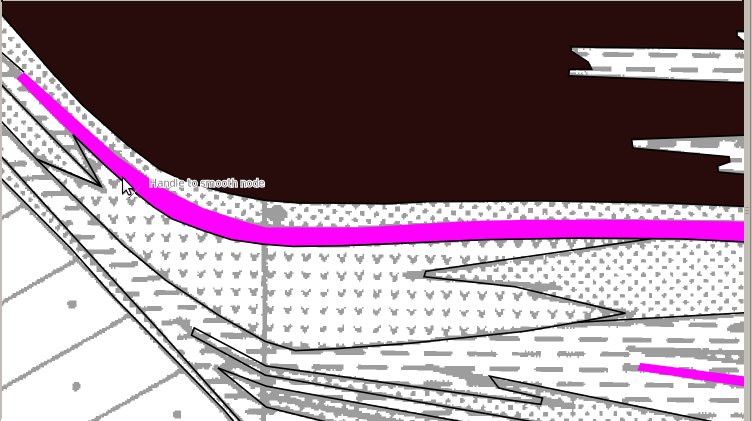
“Fill”, which you can use to change the fill color of your object.A small window should open on the right, with 3 tabs: By holding Shift the circle will be centered on the point you first clicked, instead of this point being the corner of the bounding box.Īfter creating your object, right click on it and go to “Fill and Stroke”. While dragging, keep the Ctrl key pressed to create a circle instead of a ellipse. Once the tool is selected, click and drag onto the screen to create your circle. If for some reason you cannot see the toolbox bar, go to View > Show/Hide > Toolbox. To do this, use the “circle” tool, found in the toolbox to the left side of the window.


Basic shapesįirst, let’s create a circle to represent our embryo.
#INKSCAPE DRAWING NODE TO NODE WINDOWS#
It may vary slightly depending on whether you use a Linux, OS X or Windows version, but the same tools are available in all versions. The Inkscape window should look somewhat like the above. Remember the embryo from the Introduction to GIMP tutorial ? It was this image:įor the purposes of this tutorial, we wish to create a schematic of the embryo image, and to explain its main structures. If the distinction between vectors and raster images is a little blurry, check out this LibLab tutorial about image formats. It’s different from GIMP, since the latter is mostly designed to manipulate raster images. Once you have started to play and perfect the use of paths in inkscape, you will be able to illustrate just about anything in Inkscape.Inkscape is a programme dedicated to vector manipulation, which makes it a generic tool to create all sorts of figures, from logos to diagrams. To convert an object to a path, first select the object, then choose Path > Object to Path. In Inkscape, you are also able to convert objects – like stars, rectangles, circles, and even text – to paths so you can manipulate them in ways the object does not allow you to do. Check out the editing paths section in the Inkscape Book for detailed information on many of the ways to edit paths. The Node Tool also has many other options in the Tools Control Bar that we haven’t covered here, including different node types, and additional ways of adding and removing nodes. With the node editing tool, you can also add nodes by double clicking the path, adding a node where you double click:įinally, if you have a path that is just straight segments, you can convert a segment to a curve by first selecting the node, holding down shift, and dragging in the direction you want to add the curve: Click and drag these handles to edit the shapes of your curves: When you select a node, the curve handles of that node and the surrounding nodes will also appear. Left-click on a node to select it, and click and drag a node to move it around on the canvas. When a path is selected, and the node tool is chosen, you will see all the nodes of the selected path. To edit paths further, you need to use the Node tool. To create segments in your path that contain curves, click and drag with the mouse when placing a point: The previous two examples demonstrated paths with straight lines. If you want to create and enclosed path, create your points by left-clicking the canvas, and then left click on the start-of-path control handle to close the path:

To stop adding points, right click anywhere on your canvas, and your path will appear: To create a simple multi-line path segment in inkscape, choose the pen tool, and then left click on the canvas to create the points of your path. The default path type (and the one we are going to cover in this article) is the bezier path. The pen tool is the quickest way to create a path with Inkscape. However, if you need to create a less than standard shape in inkscape, you will need to use Paths. These objects in Inkscape allow us to create specific shapes in many different styles, based on tweaking a few variables of each object type. In our initial Inkscape tutorial, we covered the basic creation and manipulation of shapes such as stars, polygons, rectangles, spirals and circles.


 0 kommentar(er)
0 kommentar(er)
